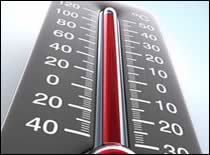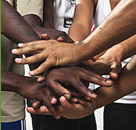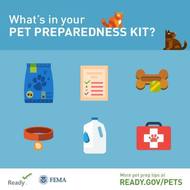
|

Findings from a newly-released survey indicate that there are specific levers that government and private sector partners can use to influence and increase overall individual and community preparedness.
The Federal Emergency Management Agency's (FEMA) Individual and Community Preparedness Division (ICPD) released the findings from its 2015 National Household Survey of 5,000 Americans in June. The survey is designed to measure household and individual preparedness and awareness.
Among the most significant findings, the survey found a positive relationship between awareness of preparedness information and the action of taking steps to prepare for a disaster.
The survey also notes a relationship between experience and action, finding that individuals living in areas with a history of a specific hazard and who have experienced the impact of that hazard are significantly more likely to report they had taken basic steps to prepare themselves and their household.
"These are positive results and really help validate the work that FEMA and our partners across the country have been doing," said ICPD Director Helen Lowman, upon release of the survey. "Going forward, we will be able to use this data to include all populations as we continue to build a culture of preparedness."
When it comes to awareness of preparedness information, 66 percent of Americans living in areas with a history of hurricanes reported that they had read, seen, or heard information on how to better prepare for a hurricane within the past six months, the survey said.
Individuals living in areas with a history of tornadoes were the next most aware of the pertinent preparedness information for their relevant hazard with 53 percent of respondents in those areas saying they had read, seen, or heard information on how to prepare for a tornado in the last six months.
The survey included a series of oversamples in U.S. counties where specific hazards, including: earthquakes, extreme heat, floods, hurricanes, tornadoes, wildfires, and winter storms, present a risk to those populations.
ICPD will be going back into the field later this summer to administer the 2016 National Household Survey.
For more information and to review a summary of the 2015 findings, click here.
|
 | |
|
Receiving timely information about severe weather can help you know when to take action to be safe. FEMA, along with the National Weather Service (NWS) make it easy for you to receive alerts and warnings whether at home, work, or school.
- Emergency Alert System (EAS): Used by authorities to send detailed warnings to broadcast, cable, satellite, and wireline pathways;
- Wireless Emergency Alerts (WEA): Free text messages sent by local authorities to equipped mobile devices within a range of cell towers broadcasting in the affected area. You do not have to sign up for WEAs; and
- The FEMA App: Get severe weather alerts from the NWS for up to five U.S. locations; learn how to stay safe before, during, and after disasters; and more. Download the app onto your Apple or Android mobile device.
Accessing these and other notification systems will help keep your family safe when seconds count!
 | |
|

Summer is in full swing and temperatures are on the rise. According to the National Weather Service (NWS), heat is one of the leading weather-related killers in the United States, resulting in hundreds of fatalities each year from heat stroke and even more instances of heat-related illnesses such as heat cramps and heat exhaustion.
Heat stroke is potentially fatal and requires immediate medical attention. Symptoms include extremely high body temperature, red, hot, dry skin, without sweat; rapid, strong pulse; throbbing headache, dizziness, nausea, confusion, and unconsciousness. If you believe someone may have heat stroke, call 911. Familiarize yourself with the signs and symptoms of heat stroke other heat related illnesses and treatment with the CDC Extreme Heat Prevention Guide.
The best line of defense against these illnesses is prevention. The Ready Campaign offers the following tips to stay safe when the mercury rises:
- Stay indoors, ideally in a location with air conditioning. If your home does not have air conditioning or if it fails, go to a public building with air conditioning such as a shopping mall or public library;
- Avoid strenuous work or physical activity during the warmest part of the day (typically 11 a.m. – 2 p.m.);
- Cover windows that receive morning or afternoon sun with drapes, shades, awnings, or louvers;
- Dress in loose-fitting, lightweight, and light-colored clothes that cover as much skin as possible; and
- Eat well-balanced, light, and regular meals.
When necessary, NWS issues heat-related alerts to help you prepare for extreme weather conditions. To learn more about these alerts, visit: www.nws.noaa.gov/om/heat/ww.shtml.
|
 | |
|
FEMA's Individual and Community Preparedness Division (ICPD) invites you to a webinar on Tuesday, July 19, which will feature ways houses of worship and Community Emergency Response Teams (CERT) can partner for emergency response training. The webinar will also highlight how these partnerships improve engagements with diverse communities and populations.
Date: Tuesday, July 19, 2016
Time: 2:00 – 3:00 p.m. EDT
Featured Speakers:
- Judy Head - Northland Church, Longwood, FL
- Charlotte Franklin - Office of Emergency Management, Arlington, VA
- Alan Harris - Office of Emergency Management, Seminole County, FL
- Marcus Coleman - DHS Center for Faith-based & Neighborhood Partnerships
- Tyler Krska - National CERT and Citizen Corps Program, Individual and Community Preparedness Division, FEMA
How to Join the Webinar:
We hope that you will be able to join us on July 19!
Disclaimer: The reader recognizes that the federal government provides links and informational data on various disaster preparedness resources and events and does not endorse any non-federal events, entities, organizations, services or products. Please let us know about other events and services for individual and community preparedness that could be included in future newsletters by contacting citizencorps@fema.dhs.gov.
| 
|













